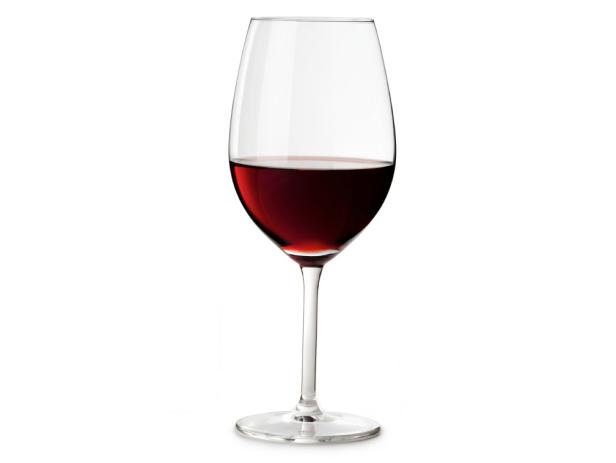Red Wine: Is It Healthy?

Eric Hood
Red wine has been coined the good-for-you alcohol. My clients often tell me they choose red wine over other alcoholic beverages because it’s good for their heart. Does red wine really provide this amazing-for-you benefit or is it an over-hyped health halo? Mull over the pros and cons.
The Dietary Guidelines for Americans say that if you would like to sip on alcohol, have a maximum of one drink per day for women and 2 drinks per day for men. When it comes to wine (red or white), one drink is equivalent to 5-fluid ounces of wine (or about 125 calories). For beer, one serving is 12-fluid ounces and hard alcohol it’s 1½ -fluid ounces of an 80-proof liquor (like rum or vodka)—both range between 100-150 calories per serving.
For those looking to maintain or lose weight I often recommend sticking to wine because the calories are easier to control. Hard alcohol is typically used in mixed cocktails. The combo of multiple shots along with juice and/or other mixers can skyrocket calories in a flash.
Many folks choose red wine because of the health benefits. Studies have found the polyphenol antioxidant resveratrol found in red wine may help protect the lining of blood vessels in your heart.
Studies have also found that red wine may be linked to breast cancer prevention. A 2011 study published in the Journal of the Federation of American Societies for Experimental Biology found that resveratrol help stop breast cancer cells from growing.
You can also find delicious bottles of red wine at a low cost. See our top 5 red wines for those on a budget.
Many red wines are made with sulfites to help prevent microbial growth and extend shelf life. Sulfites are also used to slow the oxidation process, which helps preserve flavors as wine ages. One in 100 people who have asthma are sensitive to sulfites. They can develop symptoms such as itchy skin, nausea, stomach cramps, diarrhea or difficulty breathing. The FDA requires that sulfites be listed on the label if used. Organic wines don’t use sulfites, but are tougher to find and are usually more expensive.
Oftentimes folks hear a food or beverage is good for them and think more is better. This isn’t the case with red wine (or most other foods for that matter). The reason the Dietary Guidelines for Americans has their recommendation of 1 to 2 drinks MAX per day is because drinking too much of any alcohol (including wine) can increase the risk of diseases such as cancer, osteoporosis, heart disease and obesity. It can also reduce fertility. Although a moderate amount can have wonderful benefits, too much can be detrimental.
The Verdict: Red wine is definitely on our healthy list, but just like in the story of Goldilocks, too little or too much won’t do—you want it “just right” – or in this case, in moderation.


































